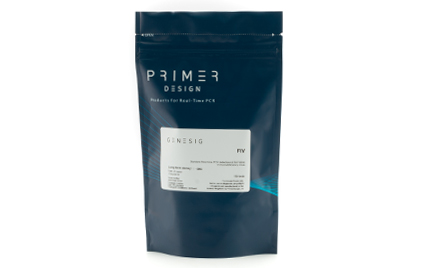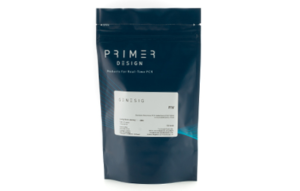Flavobacterium psychrophilum
$465.00 – $928.00
In Stock & Ready to Ship
The Primerdesign genesig Kit for Flavobacterium psychrophilum (F.psychrophilum) genomes is designed for the in vitro quantification of F.psychrophilum genomes. The kit is designed to have the broadest detection profile possible whilst remaining specific to the F.psychrophilum genome. The primers and probe sequences in this kit have 100% homology with a broad range of F. psychrophilum sequences based on a comprehensive bioinformatics analysis.
Flavobacterium psychrophilum causes the bacterial cold water disease (BCWD) on salmonid fish. F.psychrophilum is a gram-negative, rod-shaped bacterium of the family Flavobacteriaceae. The disease typically occurs at temperatures below 13⁰C, and it can be seen in any area with water temperatures consistently below 15⁰C. Salmon are the most commonly affected species. This disease is not zoonotic. BCWD may be referred to by a number of other names including cold water disease, peduncle disease, fit rot, tail rot and rainbow trout fry mortality syndrome. Asymptomatic carrier fish and contaminated water provide reservoirs for disease. Symptoms of fish infected with typical BCWD have lesions on the skin and fins. Fins may appear dark, torn, split, ragged, frayed and may even be lost completely. Affected fish are often lethargic and stop feeding. Infection may spread systemically. Salmonid fish can also get a chronic form of BCWD following recovery from typical BCWD. It is characterised by erratic “corkscrew” swimming, blackened tails and spinal deformities. In rainbowtrout fry syndrome,acute disease with high mortality rates occurs and infected fish may show signs of lethargy, poor-appetite and exopthalmos (bulging eyes) before death. Treatment can involve adding ammonium based anti-microbials can be added to the water of infected adult fish and fry. Alternatively, antibiotics such as oxytetracycline can be given to adults, fry and broodstock. Ultimately, to prevent the disease, it is necessary to ensure water is pathogen-free and that water hardening is completed effectively for eggs. A presumptive diagnosis can be made based on the history, clinicalsigns,patternofmortality and water temperature, especially if there is a history of the disease in the area. Pathological histology should show periostitis, osteitis, (connective tissue and bone swelling), meningitis and ganglioneuritis (swelling of brain lining and nerves) . The organism can be cultured for definitive diagnosis although this takes time. The fastest, most reliable method is to test using Real-Time PCR. This genesig® pathogen detection kit is specifically targeted to the DNA gyrase B subunit (gyrB) gene of F.psychrophilum which ensures a high level of discrimination of the target from other, genetically similar species. Real-Time PCR offers rapid, reliable and economic testing with results potentially available in under 2 hours.



